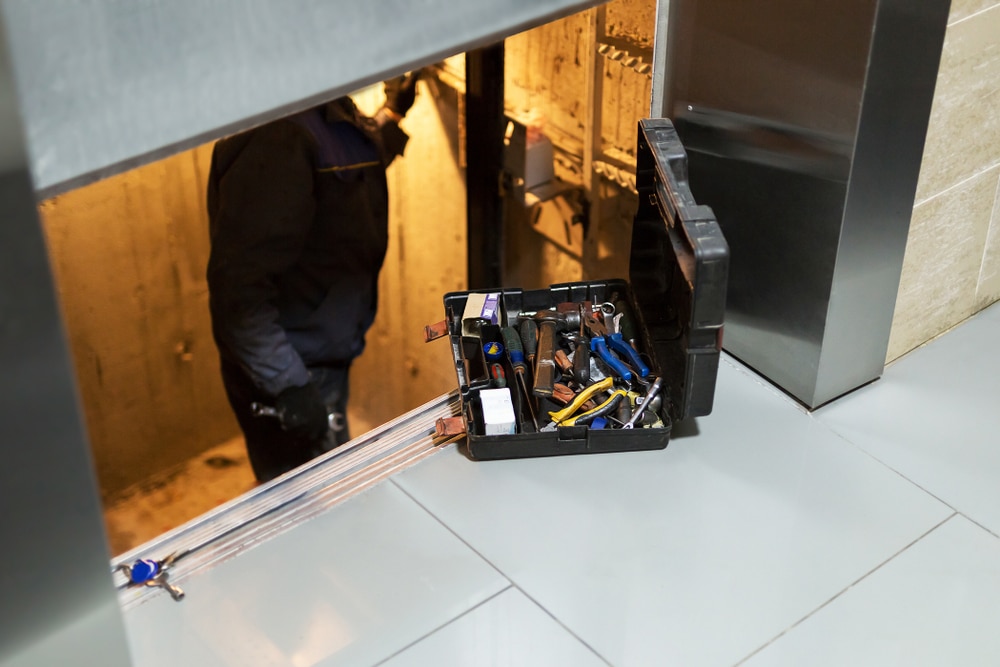
A fatal elevator accident on board a container ship highlights the importance of using proper ship safety procedures on vessels. According to the Australian Transportation Safety Bureau (ATSB), a crew member was killed after being trapped between the elevator cage and a bulkhead. It appears that proper safety procedures were not followed prior to this maritime accident.
Improper Ship Safety Procedures Causes Fatal Elevator Accident
The fatal elevator accident happened in 2018, but is still generating discussion in the maritime industry. That is because accidents like this one are preventable with proper use of ship safety procedures.
According to reports, the electro-technical officer (ETO) on board the containership OOCL Kuala Lumpur had completed technical repairs and was testing the personnel elevator. The ETO was driving the elevator from on top of the cage when he became trapped between the cage and a bulkhead. Tragically, he suffered fatal injuries.
The ATSB investigation reveals that the ETO was working alone and was in the prescribed safety zone at the time of the accident. The elevator was in “manual” position. The ATSB investigation initially reported they could not determine how and why the crew member became trapped. However, there are a series of events that may have led to the accident.
The ATSB says that the ETO must have moved from the safety zone. Or, the elevator control must have been changed from manual to automatic. Furthermore, the safety barriers that should have been in place before maintenance began were not in place. There was no warning announcement that the elevator was being worked on. That means the crew was not warned not to use the elevator. There also should have been signs posted at each elevator entrance warning the crew not to use them.
With no signs posted and no warning made, it is possible that a crew member elsewhere on the ship called the elevator. This would make the cage move unexpectedly.
How Common are Elevator Accidents?
Elevator accidents occur in various industries across the world. In the United States, around 10,200 people are injured in elevator accidents each year. According to the Centers for Disease Control and Prevention (CDC), an estimated 27 people are killed due to elevator accidents each year.
The maritime accident on board the OOCL Kuala Lumpur highlights the importance of following proper safety procedures when doing maintenance on any elevator. In regards to elevator accidents, the ATSB Director of Transport Safety says,
“Many of these accidents involve the failure to apply existing safety management procedures and/or identified safety barriers that have proven effective in reducing the risks associated with elevator maintenance.”
Ship operators and crew members must use proper ship safety procedures when conducting elevator maintenance. Workers should do these tasks carefully under the supervision of senior technical staff. By following proper ship safety procedures and ensuring adequate oversight during maintenance, such accidents could be prevented.
Learn More about Your Rights after a Maritime Accident
Maritime accidents occur for many reasons. Some accidents are truly accidents, and cannot be prevented or foreseen. Sadly, however, many more accidents are preventable with proper supervision, training and use of ship safety procedures.
When maritime accidents occur, crew members have the right to pursue compensation for their injuries. Maritime law allows injured crew members to pursue maintenance and cure benefits, lost income compensation and disability benefits. These laws are different from traditional workers’ compensation laws. That is why it is important that injured maritime workers contact a maritime injury attorney to learn more about their legal rights.
If you have questions about a maritime accident or injury, contact Maritime Injury Guide to learn more. Maritime Injury Guide offers legal guidance to maritime workers who suffer on the job injuries. To learn more or schedule a free injury consultation, call us toll free at 1-866-871-8422. You can also contact us via our online contact form.
Sources: